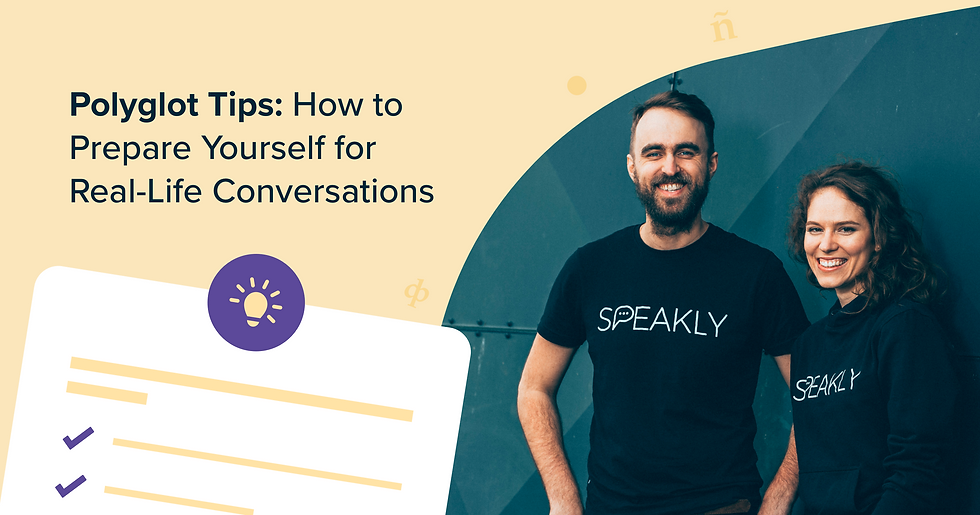Polyglot Tips: How to Prepare Yourself for Real-Life Conversations
- Ott Ojamets
- Feb 11, 2021
- 2 min read
Learning a language might sometimes feel overwhelming, and it might seem like there are so many words, grammar rules, and other stuff to memorize that it's too much to handle! 🤯
But if you know the right way to approach learning a language, it actually becomes an easy, enjoyable, and intuitive process. That's exactly what we will teach you in the Polyglot Tips segment. Today, we'll discuss how to efficiently prepare you for real-life conversations. 😎
With the right tools, conversing is easy
Having a real-life conversation usually comes so naturally to us that we barely think about what it actually entails.
And really, what do you usually talk about with your friends, coworkers, and family members? And more so, what kind of words and language constructs do you use? What do you actually say?
Whatever it is, you can be sure that you're using the language’s statistically most relevant words and sentences, which are the secret key to language learning success with Speakly (as described in this blog post).
But there are other crucially important things to keep in mind to get yourself ready to have real-life conversations much more quickly!
Yes. No. Maybe?
Today's tip covers three things:
1.) Affirmations
2.) Negations
3.) Questions
You may be wondering what those are. Well, these are the three main ways we express sentences in all kinds of situations. 👌
We either want to express something with a positive affirmation, saying, "Yes, I like to eat seven cookies every evening."
Or we want to express our unwillingness to do something by saying, "No, I will not jump out of this airplane."
Or we want to pose a question by saying, "Is that a man purse you're wearing?"
💥 These are the three most important sentence forms to know to effectively express ourselves in real-life conversation. 💥
Do this and you will be invincible in everyday conversation
These three forms of expression promote effective communication in your target language. It’s for this reason that you must always train yourself to use them with every sentence you learn. 👌
➡️ So, if you're learning an affirmative sentence, think about how you can turn it into a negative or a question.
Such brain gymnastics is awesome to be able to play around with sentences while having a conversation, and it's actually quite easy to do. Very often, each of these forms is very similar to the others.
And here's some good news: Speakly actually teaches you a sentence’s affirmation, negation, and question in its grammar section. 🚀
Next time you learn a sentence in Speakly, just open the grammar section by clicking the small book icon under the study area to learn how the sentence would be said in all its forms.
💥 If you train yourself in such a way with each sentence you learn, changing the sentence into an affirmation, negation, or question becomes second nature; you won't even notice you’re doing it. 💥




Comments